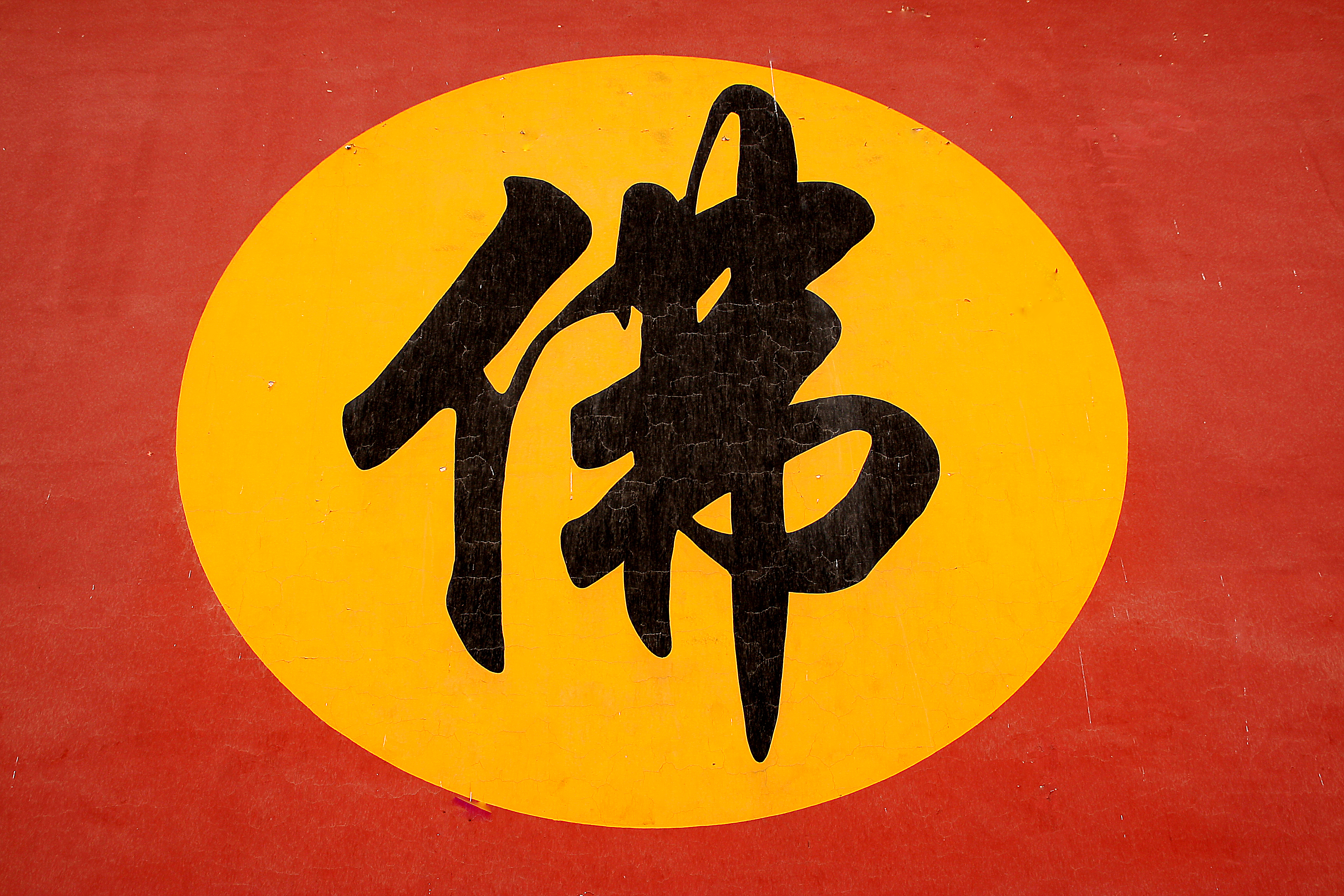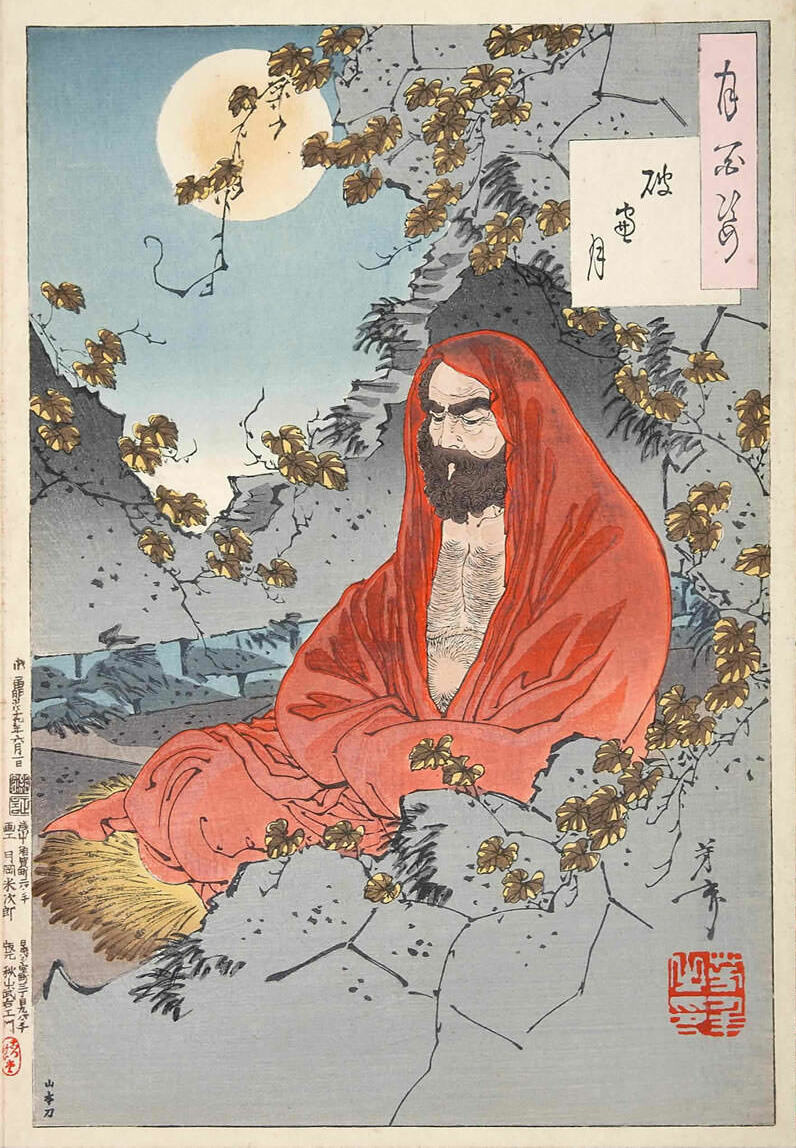|
Foyan Qingyuan
Foyan Qingyuan (1067–1120) was an important master of Chan Buddhism in the Yangqi branch of the Linji School. He was a student of Wuzu Fayan (d. 1104), and was known as one of the "three Buddhas of East Mountain" (the mountain whose famous former resident had been the 5th Chan patriarch Hongren), along with his dharma brothers, Yuanwu Keqin and Taiping Huiqin (1059–1117). Teachings Foyan emphasized independence and autonomy in his teachings, wishing for his students to be able to stand on their own feet. He said, "What do you go to a 'Zen center' for? You should make a living on your own, and not listen to what others say." He was critical of dependence on teachers, as can be seen in the following story, told by Foyan thus: In addition to his emphasis on independence and autonomy, Foyan was also critical of reliance on public cases and ''gong'an'' stories, arguing that such things did not exist during the time of Bodhidharma Bodhidharma was a semi-legendary Bhikkhu, ... [...More Info...] [...Related Items...] OR: [Wikipedia] [Google] [Baidu] |
Chan Buddhism
Chan (; of ), from Sanskrit '' dhyāna'' (meaning " meditation" or "meditative state"), is a Chinese school of Mahāyāna Buddhism. It developed in China from the 6th century CE onwards, becoming especially popular during the Tang and Song dynasties. Chan is the originating tradition of Zen Buddhism (the Japanese pronunciation of the same character, which is the most commonly used English name for the school). Chan Buddhism spread from China south to Vietnam as Thiền and north to Korea as Seon, and, in the 13th century, east to Japan as Japanese Zen. History The historical records required for a complete, accurate account of early Chan history no longer exist. Periodisation The history of Chan in China can be divided into several periods. Zen, as we know it today, is the result of a long history, with many changes and contingent factors. Each period had different types of Zen, some of which remained influential, while others vanished. Andy Ferguson distinguishes thr ... [...More Info...] [...Related Items...] OR: [Wikipedia] [Google] [Baidu] |
Linji School
The Línjì school () is a school of Chan Buddhism named after Linji Yixuan (d. 866). It took prominence in Song dynasty, Song China (960–1279), spread to Japan as the Rinzai school and influenced the nine mountain schools of Korean Seon. History Five Dynasties and Ten Kingdoms Period (907–960/979 CE) Before the Song dynasty, the Linji school was rather obscure and very little is known about its early history. The Five Dynasties and Ten Kingdoms period () (907–960/979 CE) was an era of political upheaval between the fall of the Tang dynasty and the founding of the Song. During this period, five dynasties quickly succeeded one another in the north, and more than twelve independent states were established, of which only ten are traditionally listed. This division into various regions and kingdoms led to a diversification of Chan factions, reflected in the Five Houses of Chán. The Fayan school was especially influential in the Southern Tang (937-975) and Wuyue (907-978 ... [...More Info...] [...Related Items...] OR: [Wikipedia] [Google] [Baidu] |
Wuzu Fayan
''Wuduʾ'' ( ) is the Islamic procedure for cleansing parts of the body, a type of ritual purification, or ablution. The steps of wudu are washing the hands, rinsing the mouth and nose, washing the face, then the forearms, then wiping the head, the ears, then washing or wiping the feet, while doing them in order without any big breaks between them. Wudu is an important part of ritual purity in Islam that is governed by fiqh, which specifies hygienical jurisprudence and defines the rituals that constitute it. Ritual purity is called ''tahara''. Wudu is typically performed before Salah or reading the Quran. Activities that invalidate wudu include urination, defecation, flatulence, deep sleep, light bleeding (depending on madhhab), menstruation, postpartum status, and sexual intercourse. Wudu is often translated as "''partial ablution"'', as opposed to ghusl, which translates to "''full ablution",'' where the whole body is washed. An alternative to wudu is tayammum or "''dry ablu ... [...More Info...] [...Related Items...] OR: [Wikipedia] [Google] [Baidu] |
Daman Hongren
Hongren (, 601–674), posthumous name ''Daman'', was the 5th Patriarch of Chan Buddhism ( Chinese: 禪宗五祖). Hongren is said to have received Dharma transmission from Dayi Daoxin and passed on the symbolic bowl and robe of transmission to Huineng, the Sixth and last Chan Patriarch. Biography As with all the early Chan patriarchs, many of the details of Hongren’s life are uncertain and much of his biography is layered with legend added well after his death. The following biography is based on Chan traditional sources. Childhood Hongren was born in Huangmei with the family name Chou. His father abandoned the family but Hongren displayed exemplary filial duty in supporting his mother. Although the ''Records of the Teachers and Disciples of the Lankavatara'' claim that Hongren’s father abandoned the family, Chan scholar John McRae points out that Hongren’s residence was converted to a monastery, implying that Hongren’s family was probably wealthy and prominent locall ... [...More Info...] [...Related Items...] OR: [Wikipedia] [Google] [Baidu] |
Yuanwu Keqin
Yuanwu Keqin (; Japanese: Engo Kokugon) (1063–1135) was a Han Chinese Chan monk who compiled the ''Blue Cliff Record''. Biography Yuanwu Keqin was born into the Le family of Pengzhou, Sichuan, in 1063. His family was well educated in Confucianism, a sign of acquaintance with the Chinese civil service. Nevertheless, Yuanwu Keqin choose a Buddhist monastic path and entered Miaoji Monastery (,a Buddhist monastery in Pengzhou. He ended his formal studies under Wuzu Fayan (1047-1104) when he was in his forties. Yuanwu Keqin was closely involved in the literati circles. ''Blue Cliff Record'' Yuanwu Keqin belonged to the Linji school. He was the teacher of Dahui Zonggao, who introduced the Hua Tou practice. Starting from the year 1112 on, Yuan-wu started to lecture on the ''One Hundred Old Cases and Verses o the Cases' compiled by Xuedou Zhongxian (980–1052). These lectures resulted in the ''Blue Cliff Record''. The ''Blue Cliff Record'' gives clear instructions about the co ... [...More Info...] [...Related Items...] OR: [Wikipedia] [Google] [Baidu] |
Taiping Huiqin
__NOTOC__ Taiping, Tai-p’ing, or Tai Ping most often refers to: Chinese history * Princess Taiping (died 713), Tang dynasty princess * Taiping Rebellion (1850–1864), civil war in southern China ** Taiping Heavenly Kingdom (1851–1864), the rebel government during the Taiping Rebellion * Taiping Prefecture, a prefecture during the Ming and Qing dynasties * SS ''Taiping'' (1926), a steam ship used by the Royal Navy * ''Taiping'' (steamer), a Chinese steamer that sank in 1949 Historical eras *Taiping (256–258), era name used by Sun Liang, emperor of Eastern Wu *Taiping (409–430), era name used by Feng Ba, emperor of Northern Yan *Taiping (485–491), era name used by Yujiulü Doulun, khan of Rouranro *Taiping (556–557), era name used by Emperor Jing of Liang *Taiping (617–622), era name used by Lin Shihong *Taiping (1021–1031), era name used by Emperor Shengzong of Liao *Taiping (1356–1358), era name used by Xu Shouhui Places * Taiping, Perak, a municipality in ... [...More Info...] [...Related Items...] OR: [Wikipedia] [Google] [Baidu] |
Koan
A ( ; ; zh, c=公案, p=gōng'àn ; ; ) is a story, dialogue, question, or statement from Chinese Chan Buddhist lore, supplemented with commentaries, that is used in Zen Buddhist practice in different ways. The main goal of practice in Zen is to achieve (Chinese: jianxing 見性), to see or observe one's buddha-nature. Extended study of literature as well as meditation () on a is a major feature of modern Rinzai Zen. They are also studied in the Sōtō school of Zen to a lesser extent. In Chinese Chan and Korean Seon Buddhism, meditating on a , a key phrase of a , is also a major Zen meditation method. Etymology The Japanese term is the Sino-Japanese reading of the Chinese word ( zh, c= 公案, p=gōng'àn, w=kung-an, l=public case). The term is a compound word, consisting of the characters ('public; official; governmental; common; collective; fair; equitable') and ('table; desk, altar; (law) case; record; file; plan; mandate, proposal.') According to the Y ... [...More Info...] [...Related Items...] OR: [Wikipedia] [Google] [Baidu] |
Bodhidharma
Bodhidharma was a semi-legendary Bhikkhu, Buddhist monk who lived during the 5th or 6th century CE. He is traditionally credited as the transmitter of Chan Buddhism to China, and is regarded as its first Chinese Lineage (Buddhism), patriarch. He is also popularly regarded as the founder of Shaolin kung fu, an idea popularized in the 20th century, but based on the 17th century Yijin Jing and the Daoist association of ''daoyin'' gymnastics with Bodhidharma. Little contemporary biographical information on Bodhidharma is extant, and subsequent accounts became layered with legend and unreliable details. According to the principal Chinese sources, Bodhidharma came from the Western Regions, which typically refers to Central Asia but can also include the Indian subcontinent, and is described as either a "Persians, Persian Central Asian" or a "South Indian [...] the third son of a great Indian king." Aside from the Chinese accounts, several popular traditions also exist regarding Bodhi ... [...More Info...] [...Related Items...] OR: [Wikipedia] [Google] [Baidu] |



